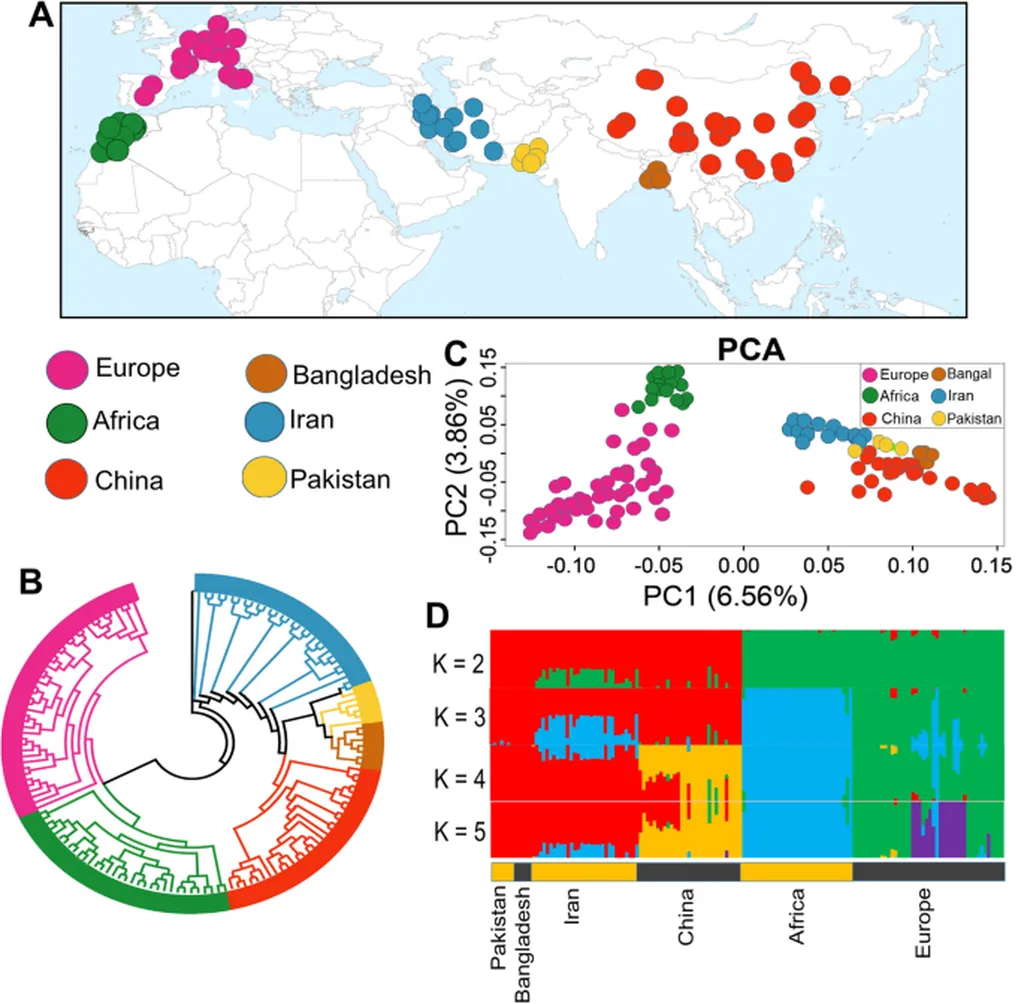In the quest to enhance dairy goat breeding and milk production, a recent study published in *Frontiers in Genetics* (which translates to *Genetics Frontiers* in English) has uncovered significant genetic markers that could revolutionize the industry. Led by Zhengang Huang from Qingdao Agricultural University in China, the research employed three advanced genome-wide association study (GWAS) models to identify key genetic traits linked to milk production in dairy goats.
The study focused on seven critical milk production traits: milk yield, fat percentage, protein percentage, lactose percentage, ash percentage, total dry matter, and somatic cell count. By analyzing these traits using the General Linear Model (GLM), Mixed Linear Model (MLM), and Fixed and random model Circulating Probability Unification (FarmCPU), the researchers identified 242 significant single nucleotide polymorphisms (SNPs). Among these, 45 SNPs showed genome-wide significance, while 197 were suggestive, corresponding to 99 positional candidate genes within a 50 kb upstream and downstream range.
“Our findings provide a comprehensive map of genetic markers associated with milk production traits in dairy goats,” said Huang. “This is a crucial step towards improving breeding programs and enhancing the overall efficiency and value of the dairy goat industry.”
The integrated analysis of the three models revealed a wealth of information. For instance, 15 significant SNP loci were consistently identified across all models, corresponding to 18 candidate genes. Additionally, the study proposed several new candidate genes related to milk production traits, including LCORL, TNFRSF1A, VWF, SPATA6, MAN1C1, MASP1, and BRCA2. These genes could play pivotal roles in future breeding programs aimed at improving milk yield and quality.
The commercial implications of this research are substantial. By identifying these genetic markers, breeders can select goats with superior milk production traits more accurately and efficiently. This not only enhances the productivity of dairy farms but also contributes to the economic viability of the industry. “Understanding the genetic basis of these traits allows us to make more informed breeding decisions,” Huang explained. “This can lead to significant improvements in milk yield and quality, benefiting both farmers and consumers.”
The study’s findings also open new avenues for further research. The identified candidate genes and SNPs provide a foundation for exploring the genetic mechanisms underlying milk production traits in greater detail. This could lead to the development of molecular breeding markers, which would further streamline the breeding process and accelerate genetic progress.
As the dairy goat industry continues to grow, the insights gained from this research will be invaluable. By leveraging these genetic markers, breeders can develop more robust and productive goat populations, ultimately enhancing the industry’s competitiveness and sustainability. The study’s publication in *Frontiers in Genetics* underscores its significance and potential impact on the field.
In summary, this research represents a significant advancement in the understanding of dairy goat genetics. The identified genetic markers and candidate genes offer a roadmap for improving breeding programs and enhancing milk production. As the industry continues to evolve, these findings will play a crucial role in shaping its future, ensuring that dairy goats remain a valuable and sustainable resource for years to come.

